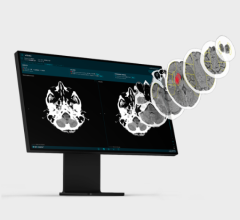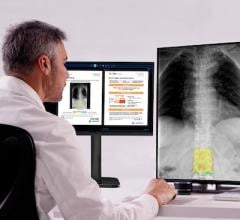
Getty Images
I took my family to Blockbuster this weekend to pick out a movie, hoping there would be something good left to rent. Then I realized it wasn’t 2001. Blockbuster was disruptive to the entertainment industry but was transitional as innovation continued to change how we consume media. In the imaging space we have lived through a transformative time as we went from film to filmless to PACS 3.0.
A new wave of innovation is coming that will again change how we capture, diagnose and store images.
From Acquisition to Archiving
For years we have talked about the cloud and its role in architecture. We are now moving rapidly toward true cloud-based infrastructure as organizations look to divest their data centers due to cost and risk. Vendors are working diligently to redesign their solutions to not be simply cloud-enabled but cloud native. Moving existing solutions to the cloud has limited value due to the challenges related to DICOM and the simple math of getting images to the desktop at the speed required to read effectively.
There are several start-up companies that are speeding to the market to demonstrate their ability to provide imaging models that are as good, if not better, than solutions we have used. They are leveraging some of the same type of streaming technology that we’ve all become accustomed to in how we watch movies. I believe over the next several years we will see a shift in the consumption of medical imaging from acquisition to archiving and all the steps in between.
Transformative Technology
One of the challenges our industry will face is absorbing the cost associated with the shift. Most imaging projects are funded based on the “burning platform” concept. For many reasons it is difficult to generate funding for replacement technology unless there is something adverse driving the decision-making. So, while the future holds great promise for improving workflow, it will take time to achieve this for our industry. But as legacy systems continue to be retired due to outdated technology and design, I believe we will see a strong move toward cloud native solutions.
The architecture is not the only reason this change will take place. Much like how we now experience entertainment, we will see a shift away from capital expenditure models for technology toward a software as a service based on cost per study. But there are challenges associated with how this can be justified. All the cloud providers charge based on storage, size, ingress and egress. The more a study is accessed, the more one can expect to pay for the subscription. Many providers I have spoken with do not have an empirical understanding of image usage. While there are very specific methodologies for accessing and using historical priors for radiologists, that data is often not quantified to build a business model for cloud consumption. But this will become important, and vendors will need to provide reporting to their customers for this.
An interesting component of this transformative technology is the inclusion of artificial intelligence (AI) in workflow. There are certainly many use cases for AI in reading workflow, but the industry will be transformed by AI in other ways. There are some compelling ideas about how to leverage AI from scheduling to appropriate use criteria to clerical to billing that will be talked about. And while many of those steps may not be managed in a “PACS,” the future of enterprise architecture that includes imaging will certainly accommodate these solutions.
Future Innovation
We have worked in a commoditized landscape for the last 20 years. Things have changed — but slowly. Now there is a truly transformative shift happening and I believe we will see the world much differently in the next decade. There are so many problem statements in radiology that can be resolved with innovative design and deployment.
I look forward to seeing it happen.

Jef Williams is managing partner for Paragon Consulting Partners LLC, a Sacramento, Calif., based healthcare IT consulting group.


 December 24, 2025
December 24, 2025 









